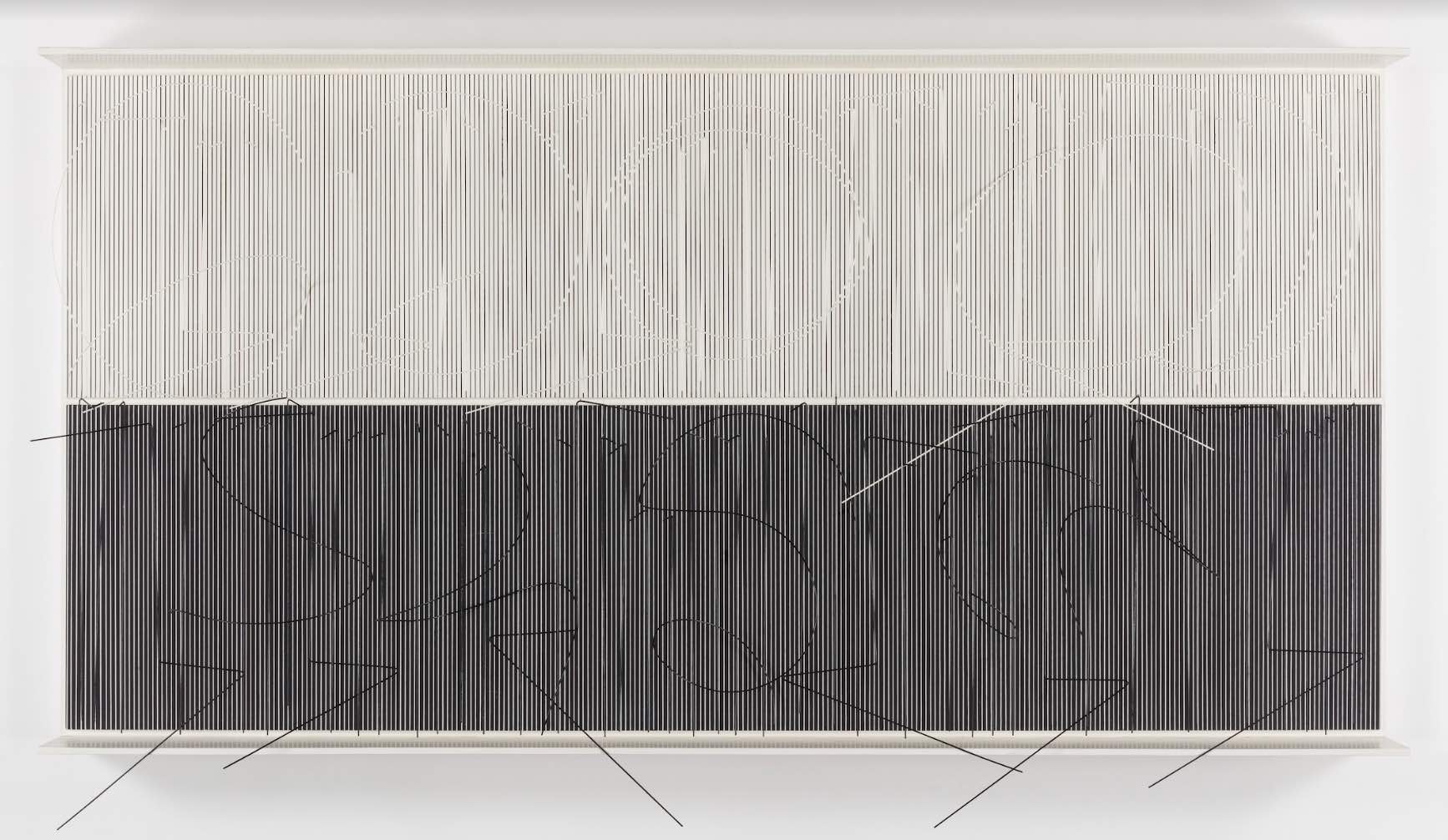
Jesús Rafael Soto
The Instability of the Real
Exhibition
-> Feb 10 2023 – Apr 29 2023
Galería RGR, Mexico City presents a solo exhibition of Venezuelan artist Jesús Rafael Soto (1923-2005), a leading figure of Kinetic art, commemorating the centenary of his birth. The Instability of the Real, co-curated by Tatiana Cuevas and Paola Santos Coy, brings together historical works from the artist's Estate (Atelier Soto), spanning over five decades.
The exhibition gathers historical works by one of last century's most influential figures in Latin American and European art. Tatiana Cuevas and Paola Santos Coy summarized their curatorial point of departure:
"It has been a privilege to return to Soto’s work on the centenary of his birth. In collaboration with the Atelier Soto in Paris, we brought together a selection that synthesizes the central ideas explored in the exhibition presented at the Museo Tamayo de Arte Contemporáneo almost twenty years ago. The Instability of the Real now displays a succinct exploration through Soto’s research towards expanding the experience of the bidimensional surface of painting into the three-dimensional space. It includes early works such as Untitled (1958), Vibration blanche (1959), L’aiguille (1961), in which he established the keys to activate the first optical relations between the elements and materials used in his works. The exhibition also includes a selection from his series Escrituras and Ambivalencias, through which he developed systems of interactions between form, space and time. Thanks to the intense work that the Atelier Soto has undertaken during the past decade to recuperate and restore vintage works, we were able to integrate Torre vibrante blanco y negro (1968), as well as Pénétrable (1992) presented at Soto's retrospective exhibition organized by Serralves Foundation in Portugal, in 1993. The exhibition is an homage to Soto, presenting an integral experience of his practice in a perhaps more intimate space that looks to emulate the way his works cohabited in some of his early solo exhibitions during the sixties and seventies."
Soto's practice transcended the static concepts of form and volume by formulating serial relationships between the elements that made up his work. He gradually integrated instability, vibration, and dematerialization processes in order to transfer the pictorial plane into the three-dimensional space. Soto's pioneering perceptual experience of the artistic object, in which the spectator's participation is essential, began in the fifties and traced a path towards the broader experimental turn. Faced with a world in constant movement, as the critic Jean Clay made clear, Kineticism is not about “things that move”; it is the awareness of the instability of the real. (“La Peinture est finie” Painting is finished, Robho, No.1, 1967). In our current nonstop-changing world, Soto’s postulates reclaim a conscious evaluation of the tremendous speed with which we inhabit and perceive time and space. About the oncoming exhibition, Galería RGR founder Ricardo González comments:
"We're honored to organize such an important project we've been working on for over a year along the Estate of Jesús Rafael Soto in Paris. It is a privilege to have his early seminal works, a Pénétrable installation, and a very representative set of works belonging to Soto’s different series and periods. Having Tatiana Cuevas and Paola Santos Coy as curators, whose expertise and experience with Soto's work have been of crucial importance in the selection of the pieces, and the exhibition's focus, allowed us to create a complete narrative on the outstanding achievements of Soto's career with a fresh view.”
The exhibition brings together a selection of historical works, it will present a compendium of Soto’s key explorations towards a novel aesthetic terrain that incorporates the inherent ambiguity of time and space.
— RGR Gallery
Jesús Rafael Soto, Doble escritura negro abajo, 1977. ©ADAGP/ Jesús R. Soto, Paris, 2023. Imagen cortesía de Atelier Soto, París y Galería RGR, México.